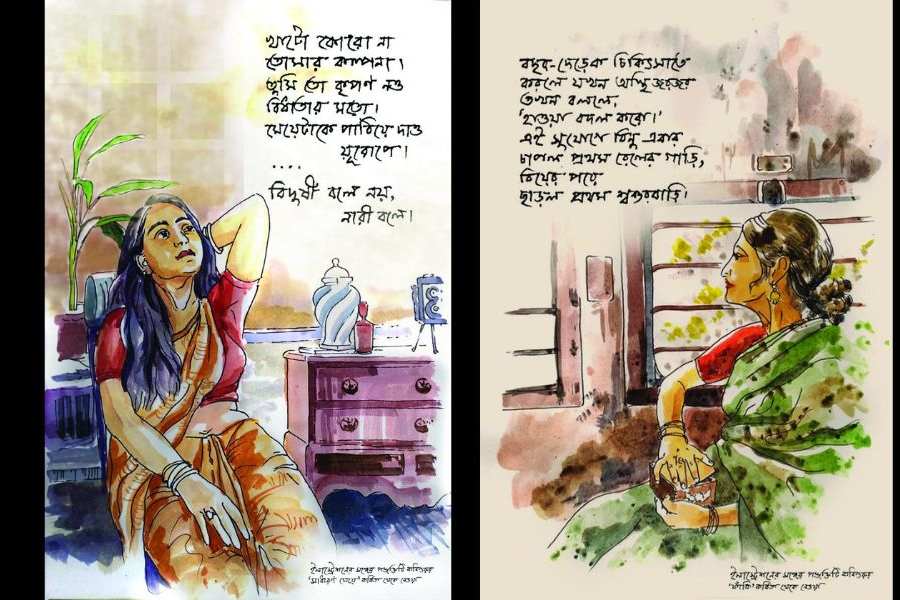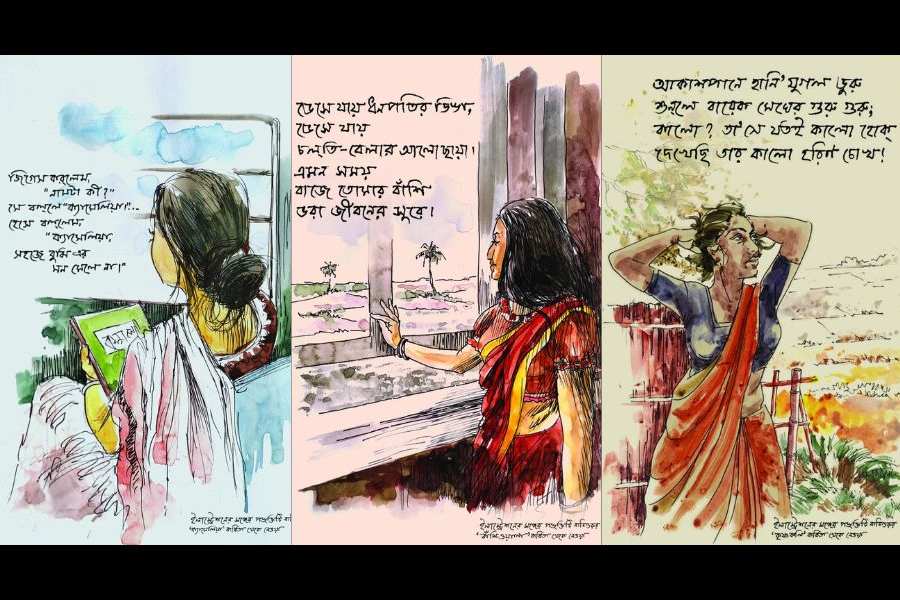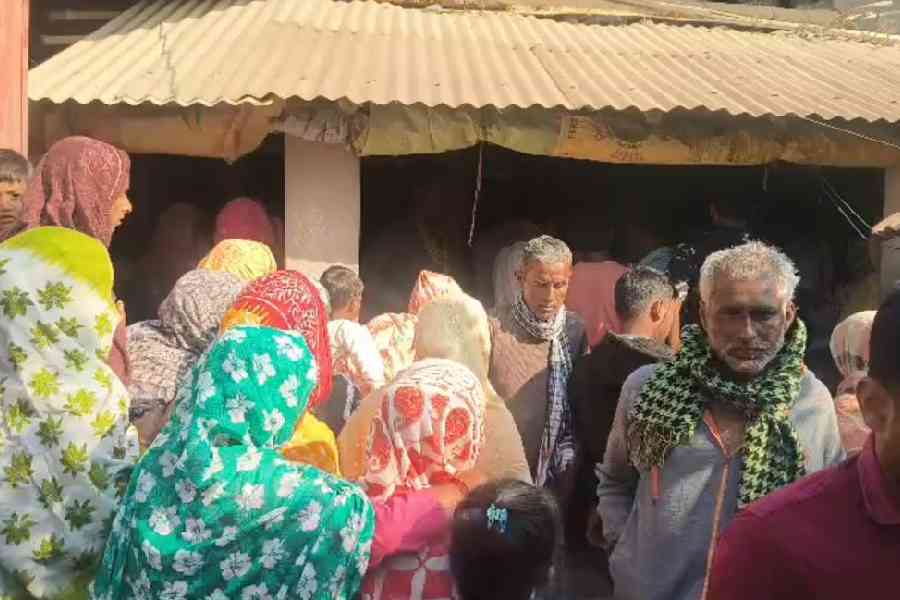This Rabindra Jayanti, Response India unveils ‘Timeless She: Through Tagore’s Eyes’, a heartfelt campaign that breathes new life into the unforgettable women of Rabindranath Tagore’s poetry. These women, drawn from his verses, are more than just literary muses; they are almost real people, bold, tender, complex, whose personalities still echo in the hearts of women today. Tagore didn’t write women as ideals. He wrote them as real. Flesh-and-blood women who thought, dared, loved and broke. In ‘Timeless She’, we try to see these women’s lives not just as literature, but as reflections of us. The digital campaign is a labour of love and a reminder that Tagore saw us. He heard us. He gave us a voice.
With the world in constant flux and conversations around identity, gender, and freedom, ‘Timeless She’ revisits five iconic women figures from Tagore’s work — Camellia, Banshiwala, Krishnakali, Fanki and Sadharon Meye — to celebrate their timeless spirit. These women, imagined over a century ago, remain startlingly modern in their defiance, their desires, and their quiet strength. They have been brought to life through five original hand-drawn illustrations by Response, crafted in watercolour, capturing the emotional texture of each character. The accompanying handwritten Bengali verses from the original poems deepen the intimate connection between the viewer and the verse. Each poem chosen for the campaign offers a unique lens into the soul of womanhood, layered, intimate and fiercely human.

Sadharon Meye, Fanki
It’s also an invitation for art lovers, literature enthusiasts and the broader public to experience Tagore’s women not merely as poetic figures, but as enduring symbols of agency and identity.
The campaign is an attempt to remind modern audiences, especially younger ones, that Tagore’s women were not passive, but powerfully written presences. To show that feminism, agency, and selfhood were embedded in Bengali literature long before we had the language to describe them. In a world that often sought to quieten women’s voices, Tagore let them sing.
CAMELLIA
Tagore’s poem Camellia portrays a young man’s silent yearning for a woman he observes during her daily tram rides. While the poem is narrated from his perspective, the true focus is the woman herself — Camellia, originally named Kamala. She is depicted not through direct interaction but through the man’s mesmerised gaze, which captures her serene strength and quiet dignity.
Camellia, or Kamala, stands out not merely for her beauty, but for her composed presence and inner strength. Her name evokes the image of the Camellia flower... elegant, poised, and transient.
The poem reveals the speaker’s growing infatuation, which remains entirely one-sided. His admiration is sparked not only by her appearance but also by a perceived depth and intelligence that she exudes effortlessly.
BANSHIWALA
In Banshiwala, Tagore tells the story of a woman whose life flows through stillness — quiet, repetitive, almost invisible in its dutiful rhythm. Her world is framed by routines and unspoken rules, her desires packed away beneath layers of obedience and time. Yet within her, something tender lingers — unnamed, untouched.
Then comes the sound: The flute. Its music, drifting through the air, does not knock at her door. It simply lingers outside her window like a whisper. But it changes everything. The familiar world tilts slightly. The notes awaken a warmth she had long stopped expecting — an ache, a pull, a shimmer of forgotten fire.
The tune does not bring her love or promises, but it brings something far more personal: A sense of being seen from within. As the music flows, so does she — out of her stillness, into a quiet storm of feeling. She begins to sense herself not just as a caretaker of chores, but as a being with beauty, longing and light.
Tagore’s Banshiwala is not about romance — it is about recognition. It is about how a single tune, played from afar, can stir the deepest parts of a woman who had forgotten the sound of her soul.
KRISHNAKALI
In Krishnakali, Tagore captures the essence of a beauty often overlooked — embodied in a dark-skinned village girl, untouched by the world’s expectations. She walks through the fields with a quiet dignity, her skin dark as the evening sky, and her eyes, like that of a deer, full of innocence and mystery. Her gaze, soft yet intense, seems to carry the stillness of the forest itself, as if she holds secrets only the earth can understand.
She wears no adornments, only the raw simplicity of nature’s embrace. Yet, to the poet, she is Krishnakali, the dark blossom of the earth, whose beauty is not shaped by external ornamentation, but by an inner radiance that speaks without words.
The world may overlook her, but in Tagore’s eyes, she is radiant in her authenticity. Her strength lies in her mystery, in her freedom from society’s constraints. In Krishnakali, Tagore celebrates the unseen beauty— the girl whose allure doesn’t need the world’s recognition, for it exists in the very essence of her soul. She is the wild beauty of the earth itself — unpolished, unspoken, yet unforgettable.
FANKI
In Fanki, Tagore tells the heartbreaking story of Binu, a young girl of 23, whose vibrant life is overtaken by illness. Despite her youthful age, the sickness makes her appear far older, as she lies in bed, unable to partake in the world around her. The poem captures the sorrow of watching a beautiful, spirited girl transform into someone fragile, yet still holding onto an inner strength.
As Binu’s health fades, Tagore highlights not only the physical toll but also her quiet, dignified endurance. Her illness, while painful, does not diminish her grace. The poet’s sorrow shifts to admiration as he realises the profound resilience she shows in accepting her fate, even as she faces the inevitability of death.
In Fanki, the fleeting nature of youth and beauty is intertwined with the deeper, unspoken strength of the human spirit — revealing that even in suffering, there is a quiet, enduring grace.
SADHARON MEYE
In Sadharon Meye, Rabindranath Tagore captures the inner turmoil of a young woman who feels caught between her own simplicity and her yearning for recognition. She is deeply aware of her ordinariness — her unremarkable, everyday life — and yet, through her reflections, she expresses a wish that her story be told. This is not a story of grandeur, but of a common girl whose existence, though unnoticed by most, holds within it an intricate web of emotion, longing, and quiet beauty.
At the heart of the poem is Malati, the speaker’s imagined alter ego. She is the embodiment of an ordinary woman who desires, not fame or extraordinary accomplishments, but to have her life seen for what it truly is: A collection of simple moments, small joys, and unspoken struggles that make up the core of human experience. The speaker recognises that many may overlook her youth, her simplicity, her heartbreaks, but she hopes for someone to see the truth of her existence, to understand that even ordinary lives contain extraordinary depths.
The poem also speaks of her lover, Naresh, who once saw her in a way others did not. She reflects on the time he spent in England, where he encountered women of intellect and beauty. Yet, in her heart, she knows that despite her ordinary life, there is something unique in her that cannot be ignored. Through her plea to the writer (Sharatbabu), the woman wishes for a story where her life is given meaning — not in comparison to others but in recognition of her unique experience.
Malati’s essence is not defined by wealth, beauty, or fame, but by the quiet dignity with which she lives her life. She asks for a story where she can rise above her simplicity, where she is recognised not for being extraordinary, but for the extraordinary depth in her simplicity.
In this emotional plea, Tagore elevates the ordinary to the extraordinary, urging us to recognise the beauty and significance in the lives that often go unnoticed. The poem, through Malati, reminds us that the deepest truths are often found not in the dramatic or the grand, but in the quiet, humble moments of ordinary lives.
Rashi Ray is director,Response India










